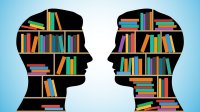Teaching Toward Consciousness
To create equity in their schools, educators must seek to validate and acknowledge students, expose and reveal the unseen, encourage questioning, and facilitate reflection.
Your content has been saved!
Go to My Saved Content.Recently, national media published several articles that examine educational inequality in our country. The New York Times analyzed the correlation between money, race, and success in different school districts, while National Public Radio produced a series titled School Money: The Cost of Opportunity.
This information about schools and the disparate daily realities of students are a reminder that educators must develop pedagogy that speaks to and examines a range of understandings and experiences. To ignore the lives of young people and the current state of affairs is to fail students and miss the potential for education to inform, challenge, and inspire change. There is work to be done in classrooms at all settings -- exclusive institutions, high-poverty areas, mixed-population schools, and environments not easily summarized -- but the work differs depending on the community and the individuals.
Windows and Mirrors
Gregory Michie and many other educators speak about the importance of windows and mirrors for students. This framework, popularized by Rudine Sims Bishop, leads to questions:
- What is the role of windows and mirrors for a student in an affluent community and school?
- How does this contrast with windows and mirrors for students in marginalized communities and schools?
Chris Emdin developed the idea of reality pedagogy for urban classrooms, where "teaching and learning [are] based on the reality of the student's experience." This pedagogical vision, an extension of the work of Paolo Freire and Gloria Ladson-Billings, can be used to develop guidelines and help root educators who use reality pedagogy, regardless of the students they serve.
Once there is a vision and a goal, educators can continually modify the guidelines. Here is a start:
Validate and Acknowledge
Students will not invest themselves in complex intellectual work unless they feel that their voice matters in the classroom. Depending on where we teach, some of our students may arrive at school not having had their basic needs met. At the other end of the spectrum, our students may come from environments steeped in vapid materialism and overconsumption. Maybe they're set in certain belief systems and unwilling to listen to the ideas of others. We can acknowledge that all students face challenges and struggles without ignoring larger struggles for social justice. Any community that asks people to learn, to be vulnerable, and to transform (Freire's idea of conscientization) must be a place where people know that they can be honest and that they will be heard.
Expose and Reveal the Unseen
Windows expose us to the others' realities. For students who grow up in what many call the mainstream of this country and are conditioned to think of themselves and their lives as normal, windows provide necessary access to different realities and understandings of the world. These windows allow students to begin questioning their own realities and assumptions while developing compassion for and understandings about the experiences of others.
No one should grow up without mirrors, feeling that their experiences or voice are without value. For some young people in our society, the public representation of their reality is regularly negative or lacking in complexity and substance. Learning that can access the familiar while providing opportunities to develop a public voice and examine one's own story and history is crucial to developing feelings of belonging and agency.
Question
When curriculum is framed around inquiry, the status quo is open to examination and debate. Susan Lytle, an education professor and author who influenced me greatly, speaks regularly of problematizing ideas. When units of study and classroom practice are based on inquiry, teachers can help students develop the intellectual feistiness to question what many of us have learned to accept as given:
- Why is it that richer families live in certain areas and poorer families in others?
- How can we explain the continued lack of diversity in different sectors of our society?
- Why do schools in different neighborhoods look so different?
These types of questions encourage investigation and help people develop clearer windows and mirrors.
Reflect
Learning is so much deeper when students have opportunities for metacognition. Opportunities for reflection also allow students to begin sorting through different emotions related to learning. Did information about injustice lead to anger? (That's a natural response.) Did some feel guilt for their participation in unjust systems that they didn't choose or create? (That's natural as well.) Opportunities to articulate and process one's learning allow people to move toward informed action.
Growing Into Consciousness
Our country has a remarkable education system that allows millions of youth to be nurtured, challenged, and encouraged every school day. In this context, with a vision of the potential of democratic education, we should acknowledge the ways in which we fall short and the need for students from different backgrounds to be challenged and/or validated.
In Between the World and Me, Ta-Nehisi Coates wrote to his son, "I did not want to raise you in fear or false memory. I did not want you forced to mask your joys and bind your eyes. What I wanted for you was to grow into consciousness." We should wish -- and create -- the same for our students.
